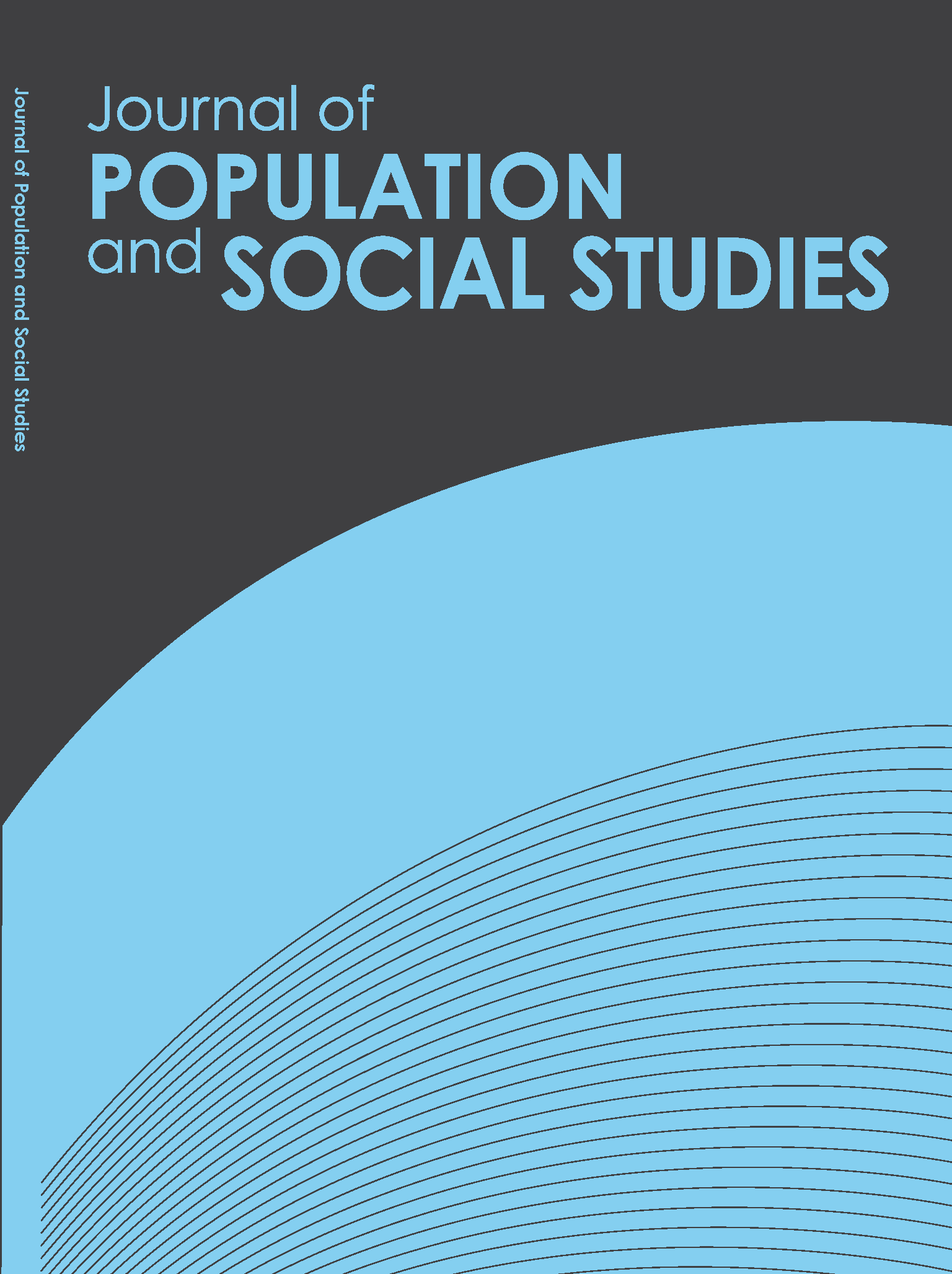The Relationship between Migration and Timing of Birth in Nang Rong, Thailand
Main Article Content
Abstract
This study examines differences in the timing of birth between migrants and non-migrants drawing on retrospective event history data. The analysis employs the Andersen and Gill, or AG model, for repeated events is a statistical model used to compute “Marital Duration-Specific Fertility Rate”. The total number of observations of married women is 10,944 person-years. The results show that after 21 years of marriage
17% of migrants had never given birth, whereas at the same time only 11% of nonmigrants had never given birth. Migrants have a smaller chance of giving birth than do non-migrants. The median time to a birth is 2.11 years for non-migrants and 2.77 years for migrants. In addition, the findings show that the likelihood of having a birth decreased by 21% for current migrants compared to non-migrants. The statistical model
shows that education and occupation have powerful effects on fertility, controlling for other variables. This means that migration affects fertility through its relationship with education and occupation. Selectivity of migration explains the effects of migration on fertility. The results confirm the hypotheses of selectivity, disruption, and adaptation effects of migration on fertility.
17% of migrants had never given birth, whereas at the same time only 11% of nonmigrants had never given birth. Migrants have a smaller chance of giving birth than do non-migrants. The median time to a birth is 2.11 years for non-migrants and 2.77 years for migrants. In addition, the findings show that the likelihood of having a birth decreased by 21% for current migrants compared to non-migrants. The statistical model
shows that education and occupation have powerful effects on fertility, controlling for other variables. This means that migration affects fertility through its relationship with education and occupation. Selectivity of migration explains the effects of migration on fertility. The results confirm the hypotheses of selectivity, disruption, and adaptation effects of migration on fertility.
Article Details
How to Cite
Chongthawonsatid, S., Isarabhakdi, P., Jampaklay, A., Entwisle, B., & Suchindran, C. M. (2008). The Relationship between Migration and Timing of Birth in Nang Rong, Thailand. Journal of Population and Social Studies [JPSS], 17(1), 1–18. Retrieved from https://so03.tci-thaijo.org/index.php/jpss/article/view/84559
Section
Research Articles

